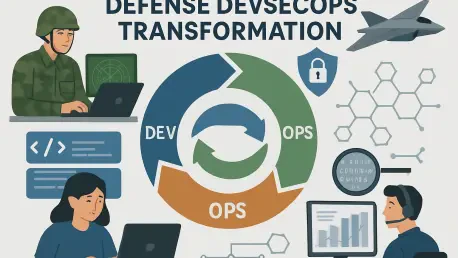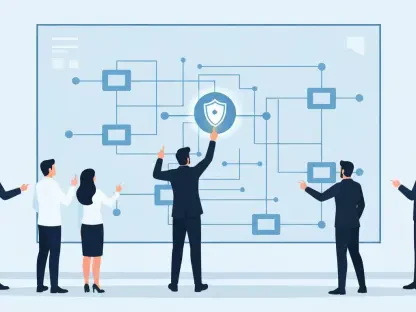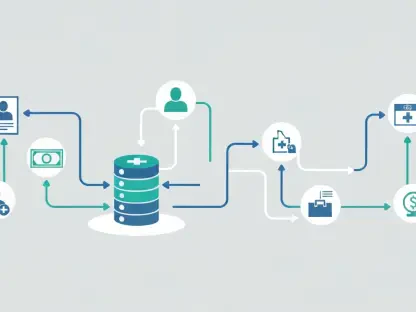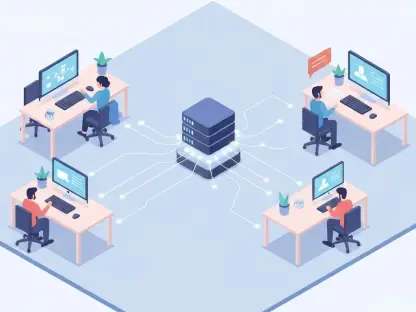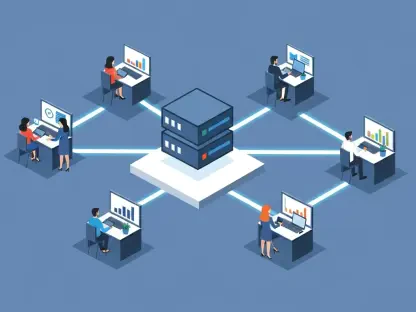The Department of Defense (DOD) is currently navigating an era of profound transformation in software development, with a sharp focus on adopting DevSecOps practices. This adaptation goes beyond mere technological tools, marking a strategic overhaul of the DOD’s software frameworks and methodologies. At the heart of this transition is the crucial realization that incorporating security measures early in the software development lifecycle ensures the rapid and secure delivery of essential capabilities. By embracing a culture of continuous integration of development, security, and operations, the DOD is setting the stage for agile methodologies and cloud-native solutions, overcoming procedural and policy challenges that previously hindered early adoption programs.
Embracing the DevSecOps Paradigm
Shifting Towards Agile Methodologies
The implementation of DevSecOps is a testament to a cultural shift within the DOD, prioritizing flexibility and adaptability in software development. By embracing agile methodologies, the department is setting the precedent for more efficient and responsive operations. This culture shift requires endorsement from senior leadership, which has been instrumental in accelerating the incorporation of these new practices. DOD Chief Software Officer Rob Vietmeyer has spoken about the necessity of such a paradigm shift. By having top-level support, the DOD is positioning itself to surmount structural and cultural obstacles that could impede progress.
The complexity of implementing DevSecOps lies not only in technological adjustments but also in profound cultural changes. Designing a software implementation plan necessitates a multi-faceted strategy, integrating cloud technologies and reforming existing policy frameworks. Key to this shift is the need to involve the workforce in a way that aligns with DevSecOps methodologies. According to Vietmeyer, resolving these foundational challenges is crucial for paving the way for future advancements in software development. The potential to transform outdated procedures into modern, efficient practices is vast, and it starts with rethinking current processes from the ground up.
Simplifying Cloud Access and Modernizing Approaches
A notable milestone in the DOD’s modernization journey is the creation of the Joint Warfighting Cloud Contracts (JWCC). This initiative aims to simplify cloud access, enabling seamless integration across various applications and systems. The JWCC is an early yet crucial step toward the broader modernization goals set by the DOD, signifying a shift in how the department views and manages digital infrastructure. By reducing the complexities associated with cloud adoption, the DOD is setting a precedent for more fluid and adaptable software development environments.
In addition to streamlining cloud access, the DOD is implementing a comprehensive plan to improve software development and acquisition processes. This involves incorporating agile development methods that prioritize responsiveness and adaptability. There is a deliberate focus on integrating Commercial Off-The-Shelf (COTS) software and Software as a Service (SaaS) solutions. This approach marks a departure from traditional acquisition processes, which were primarily geared toward tangible assets. By leveraging DevSecOps and Continuous Integration/Continuous Delivery (CI/CD) methodologies, the department seeks to enhance configuration control, vendor patch deployment, and management of network interfaces.
Achieving a Balanced Approach to Development and Security
Security by Design Philosophy
A consistent theme underscoring the DOD’s strategic shift is the elusive balance between development speed and security assurance. Security is no longer an afterthought appended at the final stages of development; instead, it is embedded throughout the process. CI/CD pipelines play an integral role in this transition by automating security checks, providing developers with instant feedback on potential security vulnerabilities, and deploying dashboards for real-time cyber posture assessments. Through this proactive approach, inefficiencies caused by post-development security fixes are minimized, embodying a ‘secure by design’ philosophy.
Central to this approach is the concept of Continuous Authorization to Operate (cATO). By embedding risk management, security controls, and authorization processes into development cycles, cATO minimizes the focus on individual software components. Instead, it prioritizes evaluating the reliability of processes and platforms as a whole. This paradigm shift concentrates on the systemic capacity to deliver consistently secure software. Achieving this requires breaking down traditional silos within development teams, security personnel, and authorizing officials. The development of guidance, criteria, and tools — aligned with industry best practices — is pivotal to fostering a comprehensive security focus.
Enhancing Risk Management Frameworks
Efforts to improve the Risk Management Framework (RMF) underscore the DOD’s commitment to securing its development processes and tools. While there are challenges in scaling these practices across the department, there is evidence of progress. Some segments have embraced the operational shift, while others remain risk-averse, posing a challenge to achieving uniform adoption. Engaging continuously with advancements in risk management protocols is essential for ensuring the safety and reliability of military software infrastructures.
As part of its ongoing efforts to address evolving threats, the DOD is particularly focused on safeguarding its CI/CD pipelines. These vulnerabilities include supply chain attacks and identity management breaches, necessitating enhanced security measures. The commitment to adopting commercial standards and industry solutions is imperative in ensuring a robust defense industrial base that anticipates and counters both current and future threats.
Navigating AI and Future Considerations
Integrating Artificial Intelligence Responsibly
Parallel to modernizing DevSecOps practices, the DOD is adapting to the increasing influence of artificial intelligence (AI) within its operational framework. AI has the potential to revolutionize the speed and efficiency of software code development and deployment, heralding unprecedented advantages. However, it also introduces unique challenges, particularly concerns regarding the security vulnerabilities inherent within AI-driven processes. This necessitates renewed oversight to ensure that AI technologies are integrated responsibly within the DOD’s systems.
The department has engaged actively with research entities and industry partners, aiming to develop robust guidance on integrating AI into existing frameworks. Understanding the unique challenges posed by AI while capitalizing on its strengths is essential to maintaining secure and efficient operational capabilities. The guidance developed through these partnerships ensures that AI models are utilized safely within defense systems, upholding the standards of security and accountability expected within the DOD’s command structure.
Sustaining Technological Superiority
The Department of Defense (DOD) is undergoing a significant transformation in how it approaches software development, with a strong focus on integrating DevSecOps practices into its framework. This transition marks a strategic shift rather than simply adopting new technologies, fundamentally reshaping the DOD’s approach to software frameworks and methodologies. Central to this transformation is the understanding that integrating security early in the software development lifecycle is critical for delivering essential capabilities both rapidly and securely.
By fostering a culture of continuous integration that interweaves development, security, and operations, the DOD is paving the way for agile methodologies and cloud-native solutions. This progressive approach is aimed at overcoming previous procedural and policy obstacles that had delayed the adoption of modern software practices. Such integration not only enhances efficiency but also fortifies the security of software systems, ensuring they meet the complex demands of defense operations in a timely manner. Through these changes, the DOD is working to create a streamlined, responsive, and secure software environment that aligns with evolving technological and security requirements.
